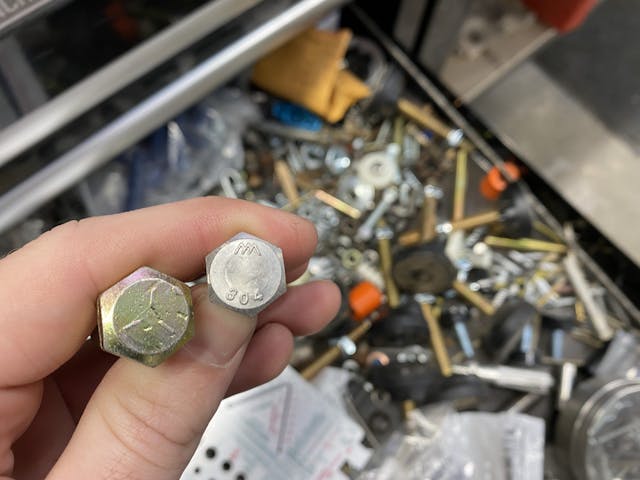Here’s everything the head of a bolt can tell you
The fasteners that (literally) hold our beloved cars and motorcycles together often become an afterthought. If there is a something holding two or three components together, it must be good enough. That attitude is acceptable some of the time, but the hundreds of nuts and bolts keeping everything in one piece are absolutely critical to safe and proper function of our vehicles. A lot of people can glance at a bolt and tell you the size of wrench needed to tighten it, but there is far more information encoded on the head of that bolt than head size. Let’s take a look.
I’ll admit I am like many DIY folks who learn on the job. Depending on the project, we may or may not truly get all the information we need to be an informed mechanic. For something as crucial as hardware, however, it’s worth doing a little research to make sure you keep the proper components on hand and know what you are handling so that, if something strips or needs replacing, you can swap it out with the appropriate stuff. That is how I stumbled upon a video by Haas Automation, Inc that packed me full of enough info to make sense of nearly all the random hardware knocking around my junk drawer.
Identifying metric versus inch hardware by the lines and numbers on the head is just the start of the analysis here, but an important one when working on projects that were assembled from parts that might have been sourced from four different continents. Being able to glance at a fastener, walk over to your tool chest, and grab the right wrench (and a matching nut or bolt) allows you to keep moving forward with minimal delay.
Next up is determining the tensile strength of a bolt. The lines cast in an SAE bolt will tell you the rating, while the numbers in a metric piece will do the same. Matching the tensile strength is important because, with proper torque, a bolt should stretch slightly. Not enough tensile strength and the bolt will actually deform. Too much, and it may come loose, because the tension is insufficient to hold it in place as designed.
In all, there is a lot of information packed onto some of the smallest bits and pieces of our vehicles. Learning to read that that data and use it to be a better mechanic or fabricator goes a long way toward saving time, space, and headaches. Now go out and organize your spare hardware drawer as practice. That’s how I’ll be spending my Friday evening.




outstanding article, as usual;
Thank you!